
Can Ukraine meet its military needs on its own? Military expert Serhiy Zgurets explains
Serhiy Zgurets, a journalist, military expert, Defense Express CEO, spoke about the strikes on Alabuga, the Ukrainian military-industrial complex, export potential and drones with a range of 1,000 km
The conversation took place on the Espreso YouTube channel as part of the Komentar program with Kateryna Shyrokopoyas. The text version was prepared by Olha Rura.
From this text, you will discover:
- Can Ukraine manage solely with its own weapons?
- Does Ukraine possess export potential?
- Has Ukraine adequately prepared economically for war?
- Why do officials assert an increase in ammunition production, yet the military still faces shortages in practice?
- What is the current range of Ukrainian weapons?
- What should be the scope of military-industrial enterprises?
- What is Ukraine’s export potential?
Can we manage with our weapons alone? What percentage of our weapons are domestic? Can we provide for ourselves in the future?
Our enemy has a huge advantage in numbers and weapons, so this makes us look at our own arsenals and defense capabilities differently. Despite having a domestic defense industry that brings together state-owned and private companies, we still require assistance from our partners. For instance, although the drone sector constitutes 80% of our production, we are only able to supply ourselves with 8% of ammunition.

Photo: Western Regional Directorate
of the State Border Guard Service of Ukraine-Western Border
We have three main areas of focus: developing our own defense, cooperating with Western companies on joint projects in the Ukrainian market, and purchasing foreign weapons. In general, we are actively strengthening our position in all these areas.
Are there any countries in the world that rely solely on their own weapons?
To a large extent, there are few such countries.
The United States Army uses mainly American weapons. They are a leader in both quantity and quality of products for their army, many of which are not exported. It is very difficult to break into the American arms market because it is dominated by American companies.
Israel is a country that pays considerable attention to the development of its own defense industry and the production of equipment to protect itself from missile attacks.
Sweden, which until recently remained outside of NATO, has long maintained a policy of neutrality, relying on the defense of its country solely through its own capabilities. Consequently, Sweden has developed a distinctive industrial complex specializing in the production of aircraft, anti-ship missiles, munitions, modern howitzers, and air defense systems.
Russia can also be viewed as attempting to address the challenge of supplying its army by relying on its own defense industry. However, faced with shortages of ammunition or drones, Russia has increasingly engaged in cooperation with other countries, such as North Korea and Iran. This trend resembles the formation of a sort of "axis of evil."
Do we have an export potential? Can we, as a country, become a prominent player in the market of new, not Soviet, weapons?
Before the onset of the large-scale war, Ukraine had export potential. Even after 2014, Ukrainian defense companies sought to generate revenue by selling their weapons abroad, given the relatively modest defense budgets domestically.
During more prosperous times, Ukrainian arms exports ranged from $800 million to one billion, facilitated by the sale of domestically manufactured products or items from the Ministry of Defense's stockpiles. This billion-dollar figure accounted for approximately 2% of total global arms exports. However, despite the expanding arms market, Ukraine's export figures experienced a decline.
Nonetheless, up until 2014 and even thereafter, Ukrainian defense firms and specialized exporters continued to market weapons produced in Ukraine or sourced from the Ministry of Defense's inventory.
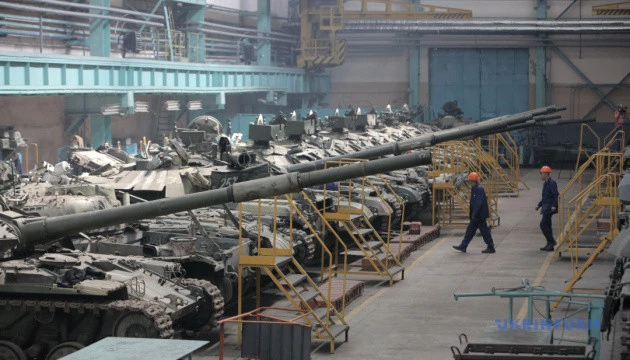
Defense enterprises in Kharkiv. Photo: Ukrinform
Why, then, with such a powerful military potential, is Ukraine actually unable to meet its military needs by at least a quarter? How did this happen?
There were systemic miscalculations and inaccurate predictions about the future, not only in Ukraine but also in European and NATO countries. These nations are currently striving to revive ammunition production and develop long-range systems.
For a considerable period following the conclusion of the Cold War, there was a prevailing belief that future conflicts would be predominantly technological, fought with long-range strike systems and advanced weaponry. Mass-scale wars akin to World War II were deemed nearly improbable. As a result, military analysts, followed by military officers and policymakers in leadership roles, began to reassess their perspectives on the military-industrial complex. Mass production gradually phased out, with emphasis placed on areas associated with high-precision systems and long-range missiles.
However, Russia’s actions have shown that wars can be both technological and massive. About a million people on each side, trenches, artillery that is actively used, and new technologies such as drones or control systems that give an advantage in intelligence.
That is why the views of officials and experts are changing. Countries are trying to cover their needs to the maximum extent possible.
How can we explain the decision of the Verkhovna Rada in 1992 to ratify the Treaty on Conventional Armed Forces in Europe, which mandated reductions in tanks, aircraft, and armored vehicles? Furthermore, in 2016, amidst ongoing war, Ukraine neutralized a million anti-personnel mines under an agreement with NATO.
This is a very complicated story.
In 1992, Soviet troops were withdrawn from Germany to the territory of Ukraine. We had about 13,000 tanks, whereas the permitted number under this agreement was within 3,000 tanks.
Ukraine was in a difficult economic and political situation when there were not enough resources to support the country's defense needs. Against this backdrop, it was decided to get rid of unnecessary expenses, since no wars were expected. A significant number of tanks and other military equipment were withdrawn or disarmed due to lack of funds for their maintenance and service. This resulted not only in the reduction of conventional weapons, but also affected Tu-95 and Tu-160 bombers, which were transferred to Russia for our artificially created debts. We also gave away 500 Kh-55 cruise missiles, which are now being used by Russia to attack Ukraine.
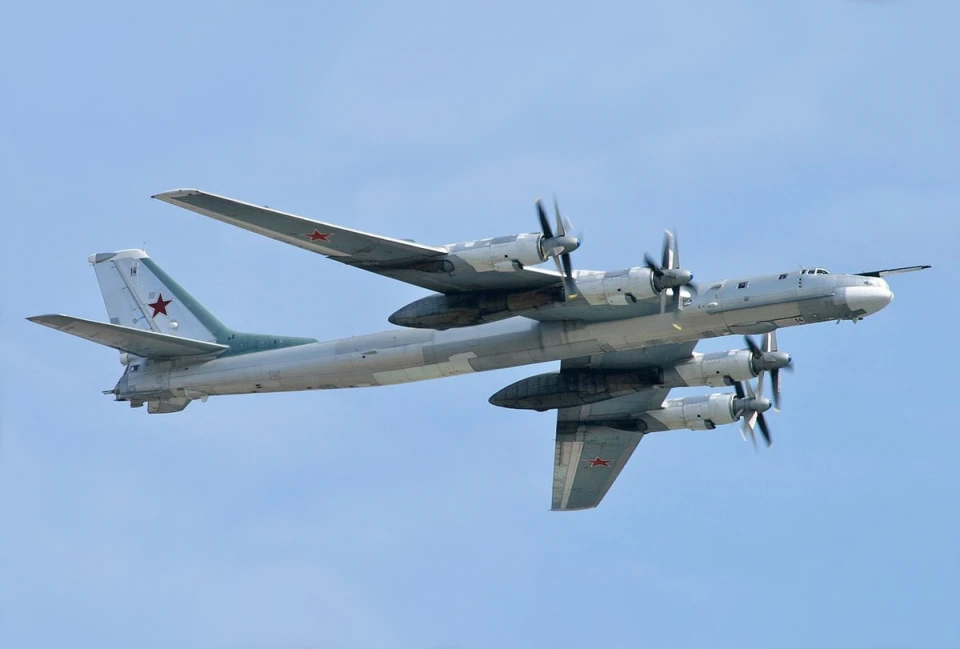
Tu-95 over Moscow during the parade. Photo: commons.wikimedia
Many of these things look strange from our perspective today, but we were not politically inclined to do anything else at the time. And even now, before a large-scale war, we were not preparing for war.
In 2020-2021, the amount allocated for road construction was 2-4 times higher than the amount allocated for arms purchases.
Currently, $1.4 billion is allocated for defense procurement. This is 20 times more than the amount allocated for this purpose in 2021. And even this is not enough to fully meet the needs of the armed forces.
We continue to rely on the help of our partners, especially the US, which last year amounted to $40 billion, although about 2/3 of this amount was spent on US defense companies that are supposed to manufacture weapons that will be supplied to Ukraine.
Is it true that the first shells produced by Ukroboronprom State Concern in 2022 were more expensive than imported ones? If so, what determines the cost of weapons?
The cost of weapons is an important factor, but it has somewhat receded into the background due to the full-scale war. The demand for weapons has grown rapidly and the delivery time has affected the cost of any weapon system, including ammunition. On the eve of the war, we were buying ammunition, including 152 mm shells, at $1,800 per piece. After several years of Russian aggression, the average cost of a 152 mm shell has increased and now ranges between €2,500 and €3,000.
Now all countries have begun to increase their ammunition orders, so it is difficult to cover all needs at once. If ammunition arrives faster, you have to pay more for it. If the price is lower when ordering from a manufacturer, then you have to wait.
The rise in the cost of ammunition at least threefold over the past two years is due to increased demand. There is a particular shortage of components, such as explosives and powders.
In one of his recent addresses, the president stated, “In 2024, we must achieve the utmost level of defense production.” But what exactly does “utmost” entail? Why are the figures so vague?
The "utmost level of defense production" mentioned by the president is a relative concept that can be interpreted in different ways. Most likely, it means creating the maximum potential in the production of defense equipment and weapons to ensure national security.

President of Ukraine Volodymyr Zelenskyy during his evening address on March 18.
Photo: Presidential Office
We had a number of major events with foreign companies to accelerate cooperation and the creation of new models and expand production at our own enterprises.
In particular, there has been progress in the development and production of FPV drones and maritime drones. There has also been a partial breakthrough in the field of armored vehicles, especially in the context of Ukrainian enterprises that produce a significant number of 4x4 military vehicles for the armed forces and defense forces.
Currently, the Ukrainian army mainly uses models of equipment that meet NATO standards, so our companies are interested in joint projects with foreign companies, and foreign companies, in turn, are interested in entering the Ukrainian market, as the need for military equipment is only growing here, and therefore we can expect profits.
Although the president calls for maximum production, in reality there are many bureaucratic obstacles that foreign companies face. They do not know with whom to negotiate: The Ministry of Defense, the Ministry of Strategic Industry, or the Ministry of Digital Transformation.
Even the New York Times recently published a large article about the growing demand for weapons in Ukraine, and European companies are trying to enter the Ukrainian market, but because of bureaucratic red tape, it is difficult to achieve the expected results.
We have 500 military-industrial enterprises, of which 100 are state-owned and 400 are private. What is the reason for this distribution with a predominance of private ones? And should this sector be private at all?
There are a number of reasons for this:
- First, a significant number of Ukrainian enterprises that started producing defense products were created from scratch thanks to initiative people who wanted to develop the military-technical complex;
- Second, private enterprises are generally more efficient than state-owned ones, as they are result-oriented and ready to compete in the market. This approach contributes to the rapid development and implementation of new technologies;
- Third, our partners are interested in keeping the industry private so that they can more easily interact with their colleagues. Foreign companies are usually private and don't want to deal with government agencies because it is sometimes difficult to defend their interests.
For example, the German company Rheinmetall is starting to operate in the Ukrainian market, creating a new enterprise for the production of ammunition together with the Ukrainian side. In February of this year, it was announced that Rheinmetall would control 51% of the shares, while the Ukrainian side would own 49%. This model, based on market principles, will allow us to create an effective joint venture.
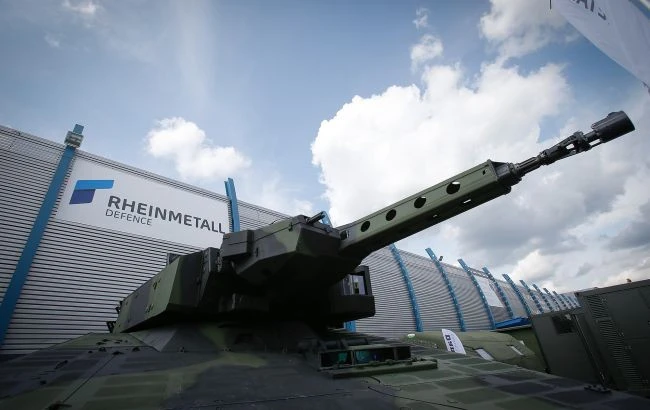
Rheinmetall will cooperate with Ukrainian production.
Photo: Getty Images
Everything seems to be right, but in my opinion, market mechanisms are not always able to respond quickly enough to the needs of the state in times of war. However, Ukraine is still moving towards a private defense industry.
Our officials successfully report on the increase in ammunition production in 2023. They say that the amount of mortar ammunition produced has increased 48 times, and the production of artillery shells has increased 2.8 times. So why do our military keep saying that there is a constant shortage of ammunition?
Firstly, even a substantial increase in production cannot offset the immense demand during times of war. Secondly, if we haven't manufactured ammunition previously, any increase in production—even by just 10 shells—from a starting point of zero may appear remarkable, but it still falls short of fully meeting the requirements.
The ammunition production programs that were launched in 2014 were extremely inefficient and partially failed, which led to the dismissal of Husiev, the head of the Defense Industry. However, such dismissals of individuals do not solve the overall problem.
Currently, we produce ammunition at both state-owned and private enterprises. For example, the Ukrainian Armor Company has stated that it can produce 20,000 mines per month, and other companies have plans to increase this number to 100,000 mines per month by the end of the year.
However, the problem is that we do not have enough explosives to equip our shells and mortars. Therefore, we are forced to look for partners in Europe, in particular in Poland or Bulgaria, where we can get the necessary components.
This process is largely due to the initiative of private companies. State-owned enterprises, for which politicians report so loudly, are lagging far behind.
I very much hope that the whole initiative with Rheinmetall, a German company that is a leader in the production of ammunition, will be the first successful step in scaling up the production of 155 mm caliber in Ukraine.
Ukrainian drone attack on a factory producing Iranian long-range kamikaze drones of the Shahed type: Russians claim that it was a Ukrainian-made Aeropract A-22 aircraft. Is this really true?
If you look at it visually, yes.
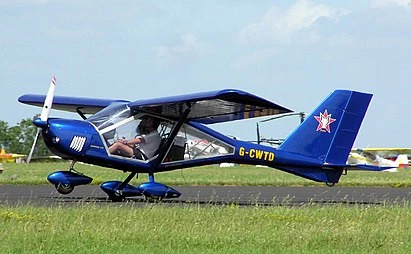
An A-22 aircraft. Photo: commons.Wikimedia
In fact, Aeropract is a well-known Ukrainian company that has produced and is producing a significant number of such light aircraft. They were actively exported to Europe, and the number of aircraft exported by Aeropract was greater than the number of aircraft produced by the state-owned Antonov.
The A-22 aircraft used in the attack has a range of over 1,300 km and can carry a warhead weighing 80 to 160 kg or more. Together with other long-range systems, such as the Bober and the Liutyi with ranges of 800-1,000 km, this is a huge potential for increasing attacks on Russian territory.
Is the ability of a Ukrainian aircraft to strike a target 1,200 km away in Tatarstan attributable to our achievement or the inadequacy of Russian air defense?
This can be seen as a combination of our successful actions and shortcomings in the Russian air defense system.
Russia's air defense system is indeed vulnerable due to the challenge of safeguarding such a vast territory. However, it's noteworthy that an economically rich industrial zone like Alabuga remains largely unguarded. There are companies producing Shaheds and KAMAZ trucks for the Russian army, and there is a thermal power plant and hydroelectric power plant nearby, so the area could be protected more effectively.
On the other hand, the successful strike by an aircraft from Ukraine also demonstrates our training and intelligence capabilities. Our military managed to successfully plan the route of the aircraft and lead it through areas that are not protected by air defense.
How far can Ukrainian weapons strike today? What are our maximum long-range capabilities?
I think this aircraft can fly over 1,300 kilometers. As for unmanned systems, when we talk about strike capabilities and missile capabilities, we have to take into account the official statements of the president and the head of the National Security and Defense Council.
Some systems, such as Hrim and Sapsan, were previously declared to have a range of about 300 km, but if we have increased our capabilities to 800 km, this is a significant increase in our strike capabilities.
The Neptune missile with a declared range of 300 km is also worth mentioning. However, recent examples show that this missile can reach even 500 km. This shows that there is a dynamic of increasing capabilities on our part.
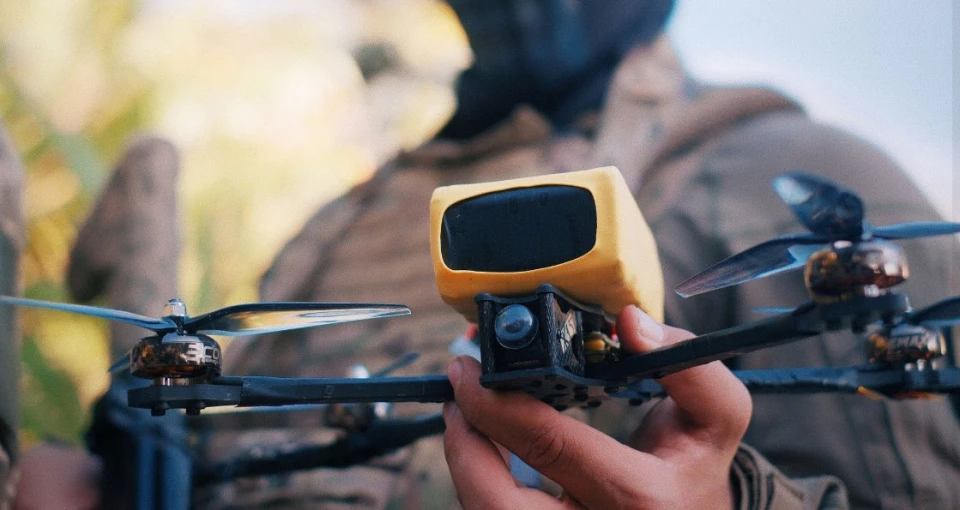
Illustrative photo: 103rd Territorial Defense Brigade
Most of the drones that attacked Russian refineries have a claimed range of 700-1,000 km. How many of these devices can we manufacture, and what is the theoretical monthly production requirement to adequately meet the frontline's needs?
When considering the quantitative production indicators, it's essential to factor in the statement made by the management of the Ministry of Strategic Industries of Ukraine, which indicated at the end of last year that this year, we should aim to produce 1 million FPV drones and up to a thousand drones with a precise range of 1,000 km.
When considering actual requirements, it's crucial to prioritize assessing the enemy's capabilities. For instance, in terms of the intensity of recent enemy attacks, there have been approximately 600 Shahed drones deployed per month. Shahed drones typically have a range of 800-1,000 km, depending on the operational context. Consequently, there's a pressing need to substantially boost the production of drones and systems, such as the Liutyi and Bober, with ranges of up to 1,000 km.
The current situation is a bit strange. We have the capacities of defense companies, but we don't have the funds to buy them. So now money is an important factor in accelerating the production of certain samples at our enterprises.
Members of the Kyiv City Council propose to establish another municipal enterprise that will manufacture drones and contribute UAH 400 million to the authorized capital. Do you think this proposal is rational, since utility companies in Ukraine are usually unprofitable, heavily subsidized, and useless?
It is very difficult to combine a utility company with the production of defense products. Now we need to keep up with the requirements of the battlefield, because what was relevant yesterday is not always relevant today.
Currently, there is a need to create drones that have machine vision capabilities and are equipped with thermal imaging cameras. Such initiatives should be coordinated with the needs of the military and a real understanding of the situation on the battlefield.
I don't really understand the rationale for creating such an enterprise when we have about 200 others whose products we can't always buy.
- News













































